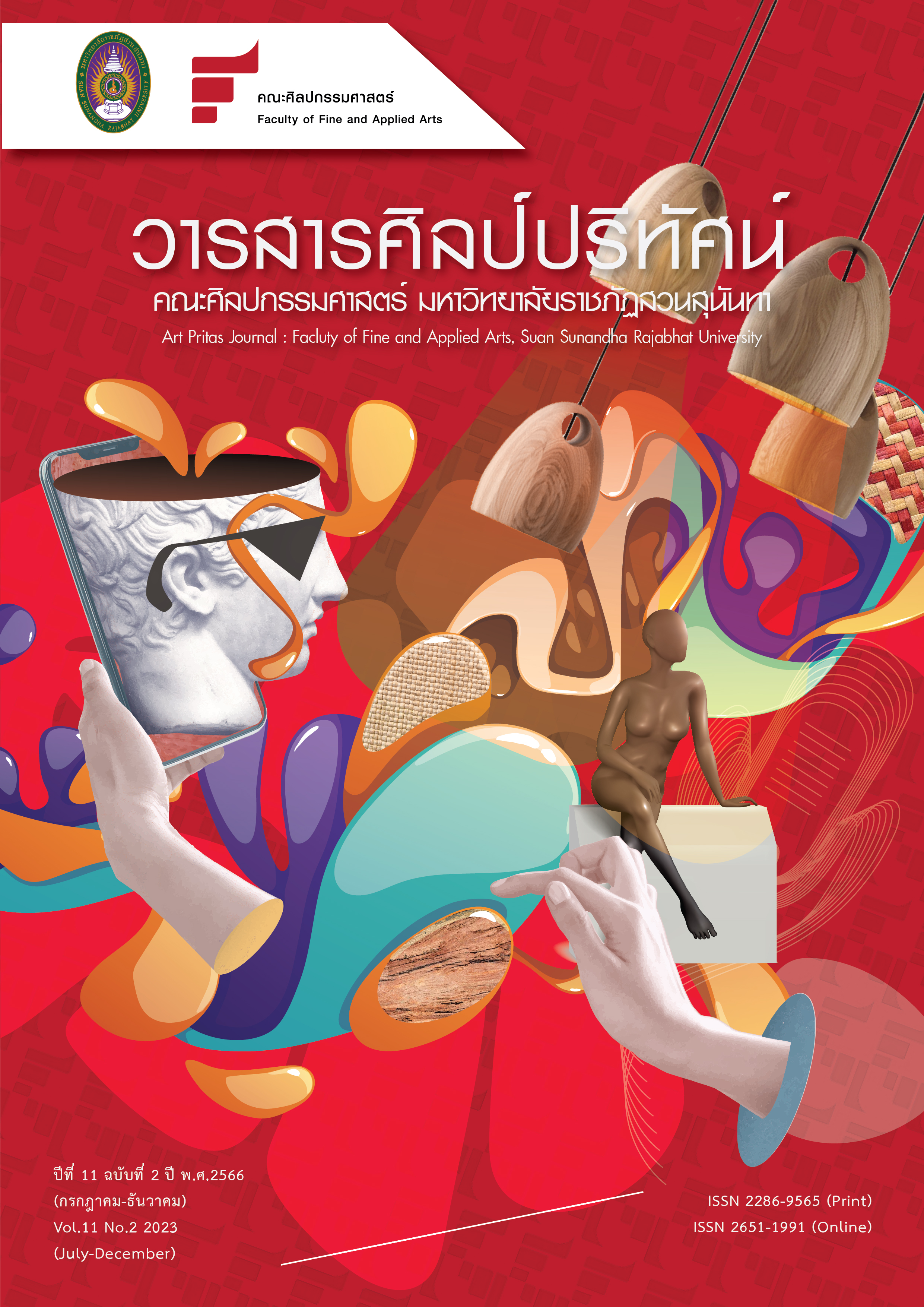“COVERED SINGING” AND VOCAL MUSIC TEACHING FOR MALE ADOELSECENT
Main Article Content
บทคัดย่อ
High-pitch vocal is a necessary skill for a tenor singer. They are singing high-pitch technique called covered singing extended singer voice range to reach the highest pitch range. In China, covered singing techniques improve male adolescent singers to enhance singing high-pitch skill. By implementing critical thinking into the learning process, the students learn to critique their vocal problems the cause of the singing problem, and the proper method for improving their singing. The assessment of the result was evaluated by themselves, the teacher, and their classmates. Adopting critical thinking in the learning process decreases the teacher-center level of leading a class in which the teacher leads the class in full response: conducting and solving individual students. Using critical thinking is transformed the learning process into a student-center. The student learned to solve their singing problem by themselves with teacher guidance. Moreover, this process is suitable for the female teacher who cannot demonstrate the tenor vocal for male adolescent students. By using this technique, the male adolescent singing in high pitch could be more successful.
Article Details

อนุญาตภายใต้เงื่อนไข Creative Commons Attribution-NonCommercial-NoDerivatives 4.0 International License.
เนื้อหาและข้อมูลในบทความที่ลงตีพิมพ์ในวารสารศิลป์ปริทัศน์ ถือเป็นข้อคิดเห็นและความรับผิดชอบของผู้เขียนบทความโดยตรง ซึ่งกองบรรณาธิการวารสารไม่จำเป็นต้องเห็นด้วย หรือร่วมรับผิดชอบใดๆ
บทความ ข้อมูล เนื้อหา รูปภาพ ฯลฯ ที่ได้รับการตีพิมพ์ในวารสารศิลป์ปริทัศน์ถือเป็นลิขสิทธิ์ของวารสารศิลป์ปริทัศน์
เอกสารอ้างอิง
Facione, P. (2011). Critical Thinking: What It Is and Why It Counts. [Ebook]. Measured Reasons LLC.
Retrieved from https://www.researchgate.net/profile/ PeterFacione/publication/251303244_
Critical_Thinking_What_It_Is_and_Why_It_Counts/links/5849b49608aed5252bcbe531/
Critical-Thinking-What-It-Is-and-Why-It-Counts.pdf.
Gregory, Adele Merryn. (2013). Laryngeal Aspects of Infant Language Acquisition (Doctoral Degree).
La Trobe University Australia.
Haiyang, L. (2019). A Comparative Study of "Mask" and "covered" singing in lyric tenor singing
(Master's Degree). Hebei Normal University.
Harries, M., Hawkins, S., Hacking, J., & Hughes, I. (1998). Changes in the male voice at puberty: vocal fold length
and its relationship to the fundamental frequency of the voice. The Journal of Laryngology &
Otology, 112(5), 451-454. Doi:10.1017/s0022215100140757
Hertegård, S., Gauffin, J., & Sundberg, J. (1990). Open and covered singing as studied by means of fiberoptics,
inverse filtering, and spectral analysis. Journal of Voice, 4(3), 220-230.
https://doi.org/10.1016/s0892-1997(05)80017-7
Hollien, H. (1974). On vocal registers. Journal of Phonetics, 2(2), 125-143. Doi:10.1016/s0095-4470(19)31188-x
Hollien, H. (1983). A review of vocal registers. In: Transcripts of the 12th symposium care of the professional
voice. New York: The Voice Foundation, Part 1.
Huang, L. (2013). Investigation on physiological and technical causes of tenor difficulty (Master’s Degree).
Central Conservatory of Music.
Liang, L. (2011). Research on the similarities and differences between male and female voices in vocal music
learning (Master's Degree). Chongqing University.
Mertes, L. (1991). Thinking and Writing. Middle School Journal, 22(5), 24-25. Doi:10.1080/00940771.1991.11496002
Reid, C. (2018). The Free Voice: A Guide to Natural Singing. Oxford University .
Topoğlu, O. (2014). Critical Thinking and Music Education. Procedia - Social and Behavioral Sciences, 116,
-2256. doi:10.1016/j.sbspro.2014.01.554.
Wang, Y. (2019). Constructing the Male Vocalist Guide Book for Teaching the Adolescent Male
Student (Doctoral Degree). Bangkok Thonburi University.
Wu, Y. (2019). The "Open" and "Close" Techniques in Vocal Singing. Northern Music, 2019(19), 45-46.
Retrieved from http://eng.oversea.cnki.net/ kcms/detail/detail.aspx?dbCode=cjfd&
QueryID=15&CurRec=35&filename=BYYY201919035&dbname=CJFDLAST2019.
Zhang, C. (2012). The study and discussion of "covered" singing (Master's Degree). Hebei Normal University.


